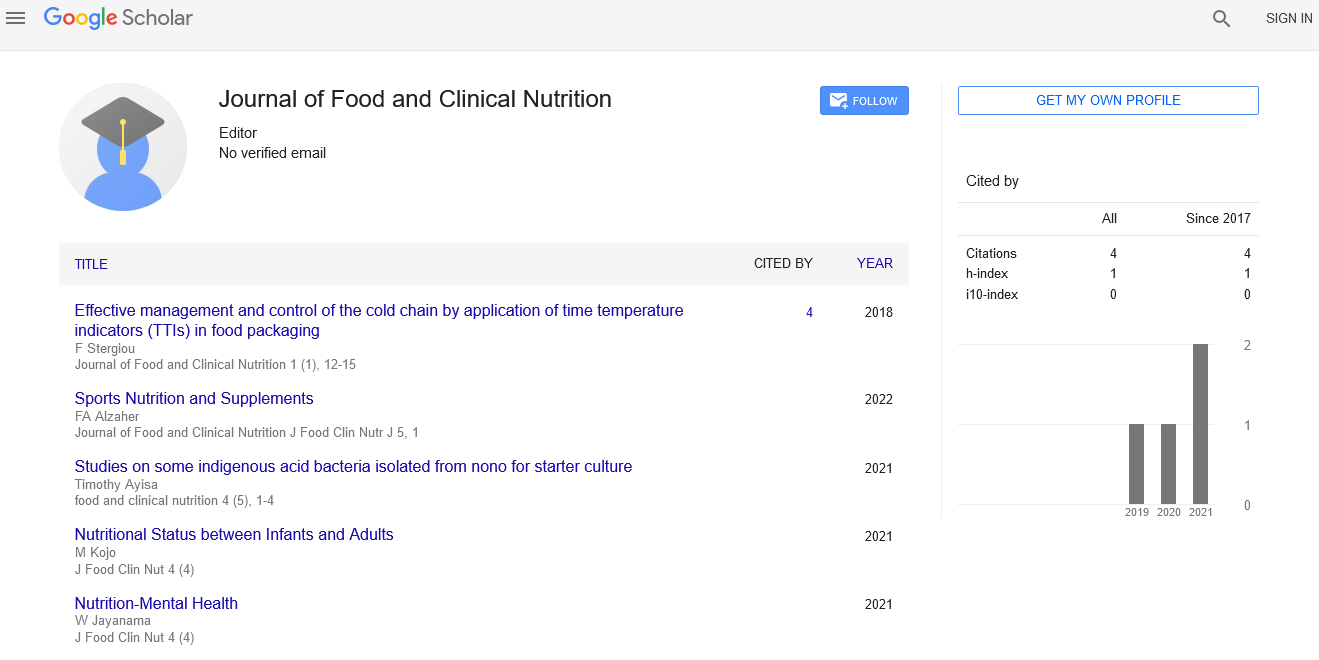Functional food fills the gaps between synthetic medicine and perfection of our wellbeing
Received: 04-Oct-2017 Accepted Date: Oct 04, 2017; Published: 12-Oct-2017
Citation: Jiang Z. Functional food fills the gaps between synthetic medicine and perfection of our wellbeing. J Food Clin Nutr. 2017;1(1):1.
This open-access article is distributed under the terms of the Creative Commons Attribution Non-Commercial License (CC BY-NC) (http://creativecommons.org/licenses/by-nc/4.0/), which permits reuse, distribution and reproduction of the article, provided that the original work is properly cited and the reuse is restricted to noncommercial purposes. For commercial reuse, contact reprints@pulsus.com
It has been a severe threatening to the global health during the past decades that the chronic diseases, such as high blood pressure, hyperglycemia, and hyperlipoidemia are prevailing among modern society. It is an evolving process that people realizing the food ingredient and eating habit are the major factors of such disorders. Decades of research has proven that some industrial food ingredients are inducing abnormal health changes, such as the relation between artificial trans-fat and cardiovascular [1-3] and mental [4] diseases, that eventually lead to the tight regulation and ban of their usage [5,6].
It is just like in the 1950s when trans-fat was beginning to be widely applied to food industry, we don’t know currently which food additives will be banned for their negative effects on our health in the future. Studies on such food ingredients and clinically related diseases are rare, especially on their deep mechanism and longtime effects. It is encouraging to hear that the journal of Food and Clinical Nutrition is launching its journey to the protection of our health with publishing studies on the topic of health and food intake. This will definitely be a strong promotion of the communication between worldwide researchers on this globally concerned issue.
Within my research scope, the food additives and artificial agricultural processing products are more often good to our health. First of all, studying the processing of agriculture products greatly enhances the total usage of them and relieves the pressure from food shortage, especially in the developing countries even in this century [7]. By investigating novel food processing technology and food enzymes, people can get more quantities and varieties of food products on the shelf of a supermarket from the same amount of agricultural outcome. For example, converting xylan in corncobs into xylooligosaccharides not only increases the efficiency of corncob usage but also lowers the demanding of sugars [8]. The function of xylo-oligosaccharides as a sweetener might not be of its selling point, however, its function to stimulate the growth of gut microbiota has been confirmed. The later has been the hottest research topic in nowadays nutritional society.
Secondly, deep processing of agricultural products may generate novel food ingredients that have positive physiological impacts. Such as the hydrolysis of polysaccharides to produce oligosaccharides, and the later have been proven to promote health in many aspects. For example, n-acetyl-chitobiose was shown to be able to alleviate the symptoms of type II diabetes mice [9]. It is more than worthy to investigate such hydrolysates of more kinds, from proteins, oligosaccharides, and so on. An obvious advantage of such additives is that they are often produced from the natural growth with green beltline. It is more attracting that some of the functional ingredients themselves are originally food, except that they are digested with different enzymes than those in our human body [10,11].
Finally, on the clinical side, such studies would not only provide healthier menu and recipes as preventive public health requires, but also lend a support of regulation and hopefully, elimination of such diseases through addition of bioactive ingredients. It is not difficult to understand such a food “treatment” could be slower in treating these chronic diseases compared with the chemically synthesized drugs. However, their all natural source and less relapse rates would render them a potentially more powerful alternative “medicine”.
In all, studies on food ingredients and their related function, either positive or negative, to human health is never a yesterday topic. Rather, as the modern food composition and eating habits have been evolving rapidly after the industrial revolution, it is becoming more critical than ever to understand the relation between food and the wellbeing of us.
REFERENCES
- Willett WC, Ascherio A. Trans fatty acids: are the effects only marginal? Am J Public Health1995;84:722-724.
- Mozaffarian D, Katan MB, Ascherio A, et al. Trans fatty acids and cardiovascular disease. N Engl J Med2006;354:1601-1613.
- Zaloga GP, Harvey KA. Trans fatty acids and coronary heart disease. Nutr Clin Pract2006;21:505-512.
- McNamara RK, Hahn CG, Jandacek R, et al. Selective deficits in the omega-3 fatty acid docosahexaenoic acid in the postmortem orbitofrontal cortex of patients with major depression disorder. Biol Psychiatry2007;62:17-24.
- Food and Drug Administration. Tentative Determination Regarding Partially Hydrogenated Oils. 2013.
- Retailers to stop trans-fat use. BBC; 2007.
- Why are Venezuelans posting pictures of empty shelves? BBC; 2015.
- Teng C, Yan Q, Jiang Z, et al. Production of xylooligosaccharides from the steam explosion liquor of corncobs coupled with enzymatic hydrolysis using a thermostable xylanase. Bioresour Technol2010;101:7679-82.
- Wu X, Wang J, Shi Y, et al. N-Acetyl-chitobiose ameliorates metabolism dysfunction through Erk/p38 MAPK and histone H3 phosphorylation in type 2 diabetes mice. J Funct Foods2017;28:96-105.
- Nielsen SD. Milk bioactive peptide database: A comprehensive database of milk protein-derived bioactive peptides and novel visualization. Food Chem 2017;232:673-682.
- Pangestuti R, Kim SK. Bioactive peptide of marine origin for the prevention and treatment of non-communicable diseases. Mar Drugs2017;15:E67.





